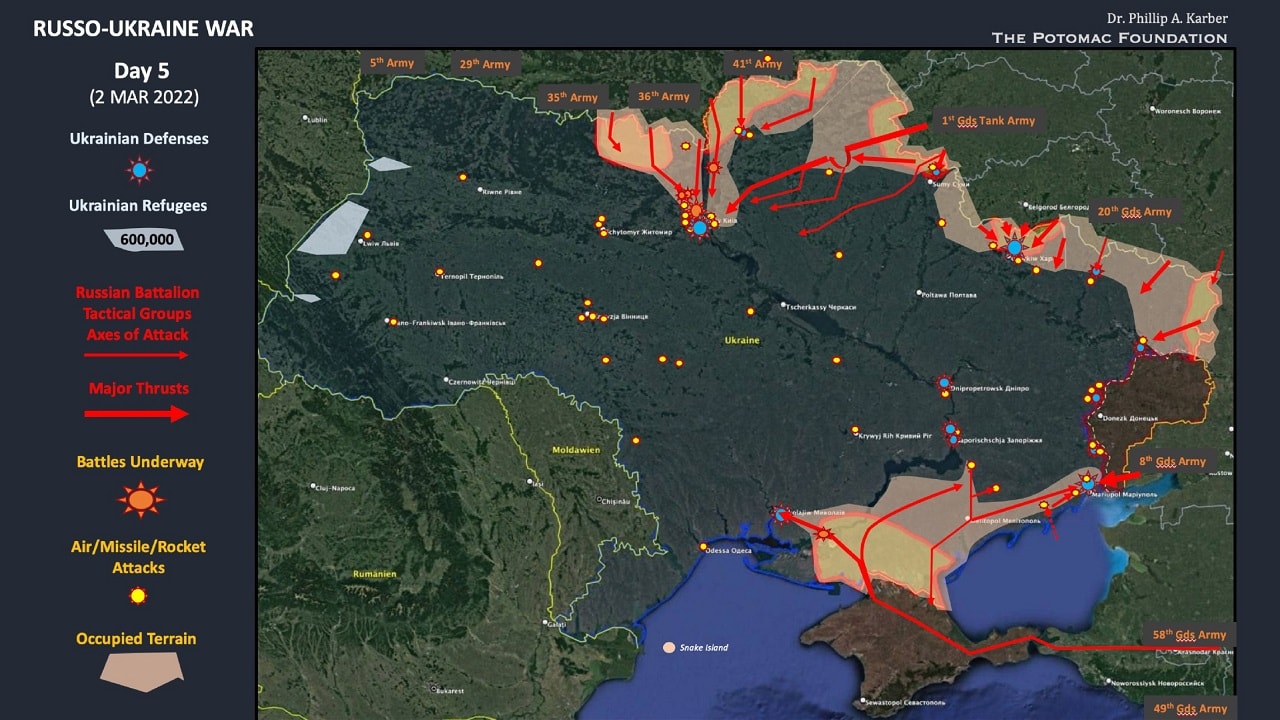Ukraine Expert Not Surprised At All Kyiv Has Initiative on the Battlefield: Dr. Phillip Karber, in an interview recently with our own Defense Editor, Brent Eastwood, predicted before the war that Ukraine would fight valiantly in defense of their country. He also predicted Ukraine would inflict heavy casualties on the Russians. Karber now says that Ukrainian troops are highly motivated and are leading from the front in a “People’s War.”
Karber, who previously visited the front lines in Ukraine 36 times over the last eight years and spent a total of 182 days on the battlefields, is the head of the Potomac Foundation policy institute. 1945s Eastwood interviewed Karber once more for his insights on the current situation in Ukraine.
Are you surprised by how strongly the Ukrainian armed forces have resisted? How much of their success is a result of training by active U.S. forces, NATO, and retired U.S. forces who went to Ukraine to help in the last few years since the Crimea annexation?
NOT surprised at all — and I stressed their commitment and capability in our last interview.
Why have the Ukrainians done so well?
Their commanders have eight years of experience in war, so they have a good appreciation of Russian tactics and operations as well as their own strengths and vulnerabilities.
The war has also weeded out old-style “sit behind the desk” managerial-style officers afraid to take initiative and waiting for top-down guidance. This new generation knows their troops, the terrain, and lead from the front.
The Ukrainians have developed their own version of “mission command.” I have been talking to Ukrainian guys I know: leading the armored brigade fighting at 7 to 1 odds and still holding Chernigov; the recon company seizing the initiative capturing prisoners at Kharkiv; the marines surrounded at Mariupol; the airborne taking on a full division at Mykolaiv; and alpha professionals who slaughtered the Chechen mercenaries in the suburbs of Kyiv. Any one of those would be considered historic heroic stands.
Because they have not had an abundance of long-range fire support from missiles, fighters or helicopters they have not become as dependent on those higher echelon assets as many Western armies. Likewise, operating against an opponent using extensive electronic warfare and massive suppressive fires, they have learned the hard way, to disperse, employ camouflage and deception.
The troops are intensely motivated — Russian perfidy and brutality have left an indelible scar and there is no more talk about them being “big brothers.” Over and over, you hear the phrase “did we ask them to come here?” and the response of the Snake Island defenders has become the national motto: “go f— yourself.”
This is particularly true in the east among the Russian ethic troops who have witnessed first-hand the cruelty of Donbas proxies and indiscriminate attacks on civilians. The entire population is outraged and for the first time in 70 years, a Western nation is waging a “People’s War” on its own territory. This support is contagious, and with ordinary citizens arming themselves to help their men in arms, it creates an energizing synergy seldom seen in modern times.
How much of their success is a result of training by US forces, NATO, and retired US forces who went to Ukraine to help in the last few years since the Crimea annexation?
Well, I believe they appreciated the U.S. effort and found value in it.
But to be honest, it had limitations. First, due to American political constraints, our trainers were restricted to the Yavoriv training area, so Ukrainian units had to rotate to them for several weeks of basic infantry training. Many of our trainers told me “we are learning more from them than they’ve from us” and “they have much more experience fighting Russians than we do”.
Second, because of that approach, we only trained a fraction of the units. And third, a lot of the Ukrainian troops that went thru Yavoriv between 2016-2020 returned to civilian life as reservists — so they were not the active guys fighting in the initial battles. The British approach was to have their trainers go to the Ukrainian units and “train the trainers,” which, I believe, was much more effective and lasting. The Lithuanians focused on junior leader training which also seems to have been very effective.
Bottom line — U.S. training was nice to have, but not decisive, and in no way should we try to take credit for the skill, commitment, and raw courage demonstrated by 90 percent of the troops who are fighting that never had the benefit of our training.
Are there any other weapons we can give to Ukraine that they can use right now that would help?
First, let me address an issue that is the inverse of your first question: “How could the Ukrainian forces have done better?”
Unfortunately, American declarative policy was to: NOT increase weapons deliveries and military aid (other than what was already in the pipeline) until the invasion started.
The good news is that in the last week we are tripling our lethal aid and many other NATO countries are suddenly sending lethal aid as well — thousands of antitank weapons and hundreds of man-portable air defense systems. If Ukraine survives, it will have one of the best-armed infantry forces in Europe.
But the bad news is that it takes time to get the aid into country — complicated when ports are blockaded and airfields under attack; time to distribute systems within the country — complicated when lines of communication are under interdiction and units are deployed in front-line positions or surrounded; time to train crews on new weapons that are complicated by their being in under fire.
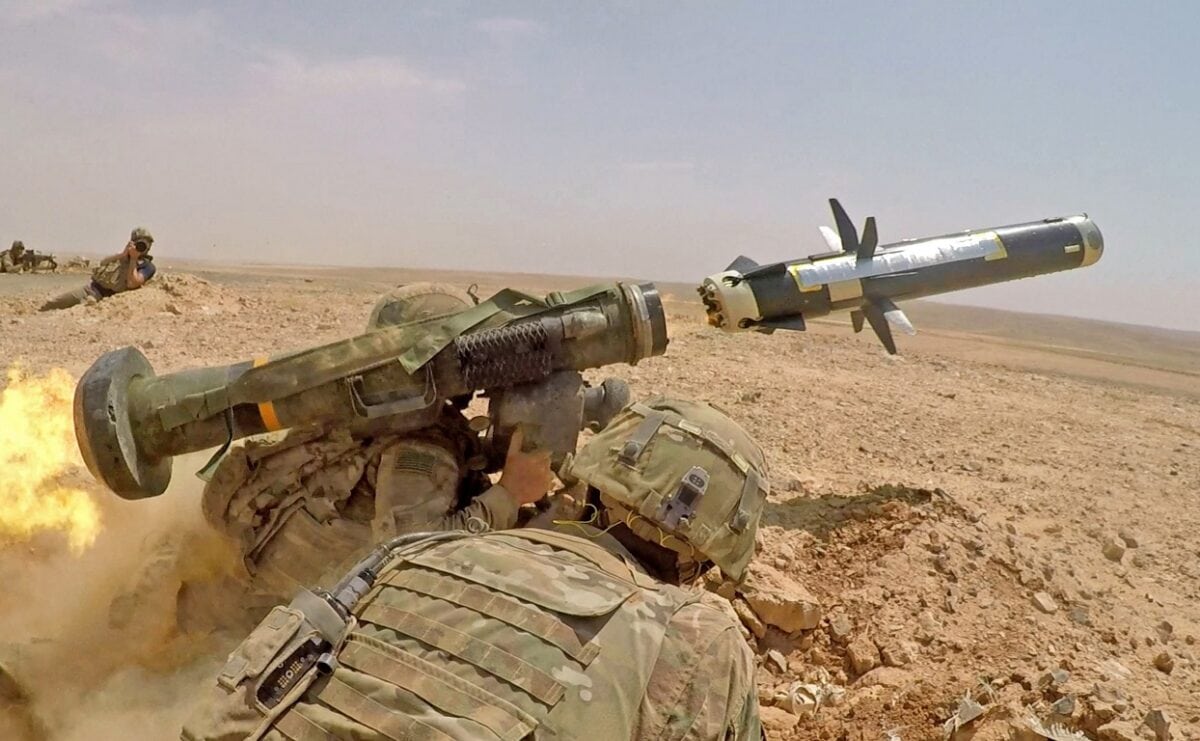
Infantry Soldiers with 1st Battalion, 8th Infantry Regiment, 3rd Armored Brigade Combat Team, 4th Infantry Division, fire an FGM-148 Javelin during a combined arms live fire exercise in Jordan on August 27, 2019, in support of Eager Lion. Eager Lion, U.S. Central Command’s largest and most complex exercise, is an opportunity to integrate forces in a multilateral environment, operate in realistic terrain and strengthen military-to-military relationships. (U.S. Army photo by Sgt. Liane Hatch)
Tragically, many deserving units may be destroyed before they see any Western weaponry.
What about small arms like M16s?
The Ukrainian regular troops are generally equipped with AK-74 modern rifles with the 5.45×39mm cartridge (similar in performance to M-16s). But the AK-47 chambered in 7.62x39mm is still popular. It is the primary weapon of territorial and militia units, who not only like its easy operation and robust performance but prefer it for close quarter urban combat.
They like the Dragunov Sniper Rifle (7.62x54mm) that has similar characteristics to the NATO 7.62 standard — not just for sniping but for penetration at longer range engagement. They are even bringing out the 100 year-old Maxim M-1910 (7.62x54mm) machine guns mounted on a wheeled carriage with a gun shield — it may look like an antique. but its mobility is really handy and the gun shield is popular with gunners.
The one U.S. small arm that the Ukrainians love and can’t get enough of is the .50 caliber Barrett rifles (all models) along with tons of ammo. The more Barretts they get, the more miserable the Russians will be.
Does this mean retired M1 Abrams tanks could be sent to Ukraine?
Unfortunately, it is way too late to talk of armor reinforcement or heavy equipment in terms of the current campaign.
If Ukraine survives this stage of the war, the smart play would be an approach called “Roll-over.” General Wesley Clark and I introduced it in testimony before Congress in July 2014 and it is finally catching on. The basic idea is to take American weaponry in storage (already paid for by the taxpayer, and for which the U.S. neither has the force structure to man nor requirement as war reserve stock) and equip our East European allies who need modernization to NATO standards. We have literally thousands of still combat-worthy M-1 tanks, M-2 infantry fighting vehicles, HUMVEEs, and hundreds of M-109 howitzers, which would be a major upgrade for a country like Poland, which has T-72 tanks, BMP, and self-propelled 122mm guns and 152mm howitzers. All of those immediately proximate to Ukraine and familiar to their troops.
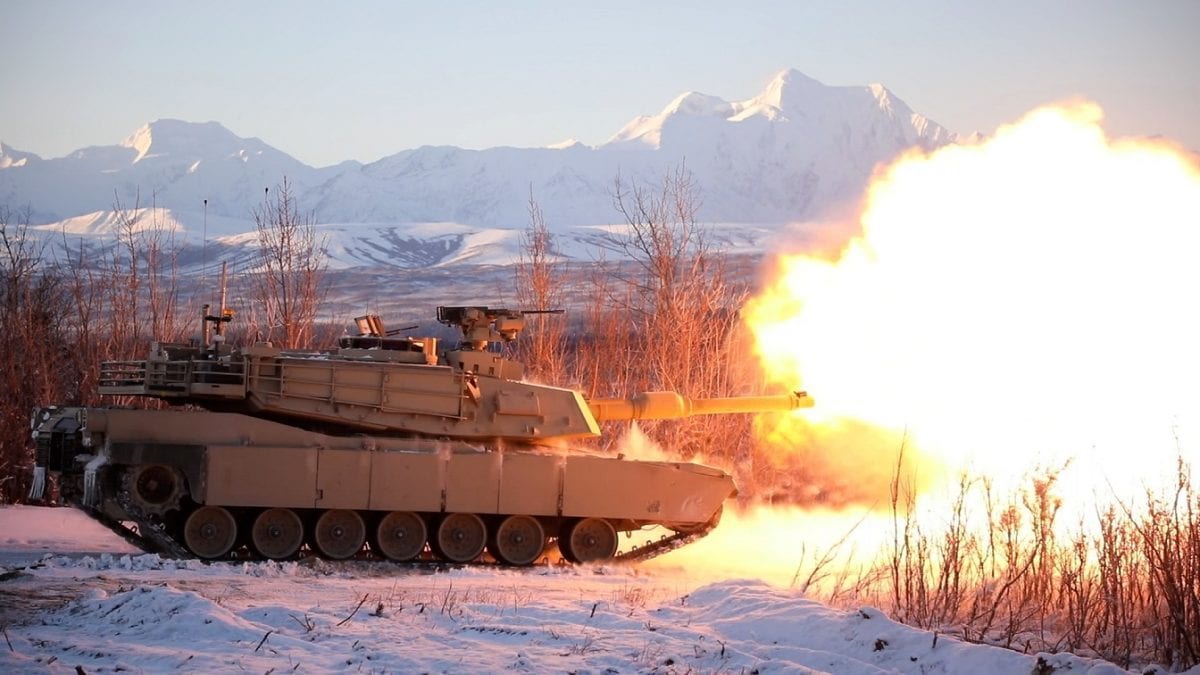
Since testing at U.S. Army Cold Regions Test Center, the Department of Defense’s lone extreme cold natural environment testing facility, began in January 2020, the M1A2 System Enhancement Package version 3 main battle tank was driven more than 2,000 miles in rugged conditions across three seasons of sub-Arctic weather, fired hundreds of rounds for accuracy in extreme cold, and underwent testing of its auxiliary power unit.
Though the platform was extensively tested at U.S. Army Yuma Test Center prior to being put through its paces in Alaska, the sub-zero temperatures brought forth glitches that would have been unimaginable in the desert.
There are two American weapons that would be real game-changers. First, getting 1,000 of our excess Bradley M-2/3 with the TOW-2 tandem warhead anti-tank guided missile. TOW-2 has shown to be very effective against even the T-90. Over eight years of war, and now in the middle of an invasion, Ukrainians have taken massive losses in their BTR wheeled armored personnel carriers and BMP infantry fighting vehicles. The M-2 Bradley would be the perfect replacement and upgrade.
Ukraine was in the process of setting up 28 Territorial Defense brigades to be manned by reservists when this invasion started. They have the manpower, but no mobility or anti-tank / air defense capability. On average, each of those Territorial sized areas is the size of Maryland or Massachusetts in square miles of territory. Equipping each brigade with our excess HUMVEES, some of which carrying Javelin and Stinger crews would be an order of magnitude increase in their Territorial capability.
Of course — all of that is dependent on Ukraine surviving.
Putin seems as if he is in a bind and his conquest of Ukraine will not be an easy victory.
Clearly, the Russian invasion has not gone as smooth as they had anticipated:
— The initial “shock and awe” campaign hit a number of Ukrainian targets but clearly did not take out all of the S-300 air defense missiles or fighter aircraft such as MiG-29s;
— The penetrations of a number of independent Battalion Tactical Groups (BTGs) did not have enough weight or staying power to achieve their aggressive objectives. The Russian approach of combining a variety of BTG into ad hoc formations has meant that their command and control, fire support, and, critically important, coordination of sustainable logistics resupply were not optimized.
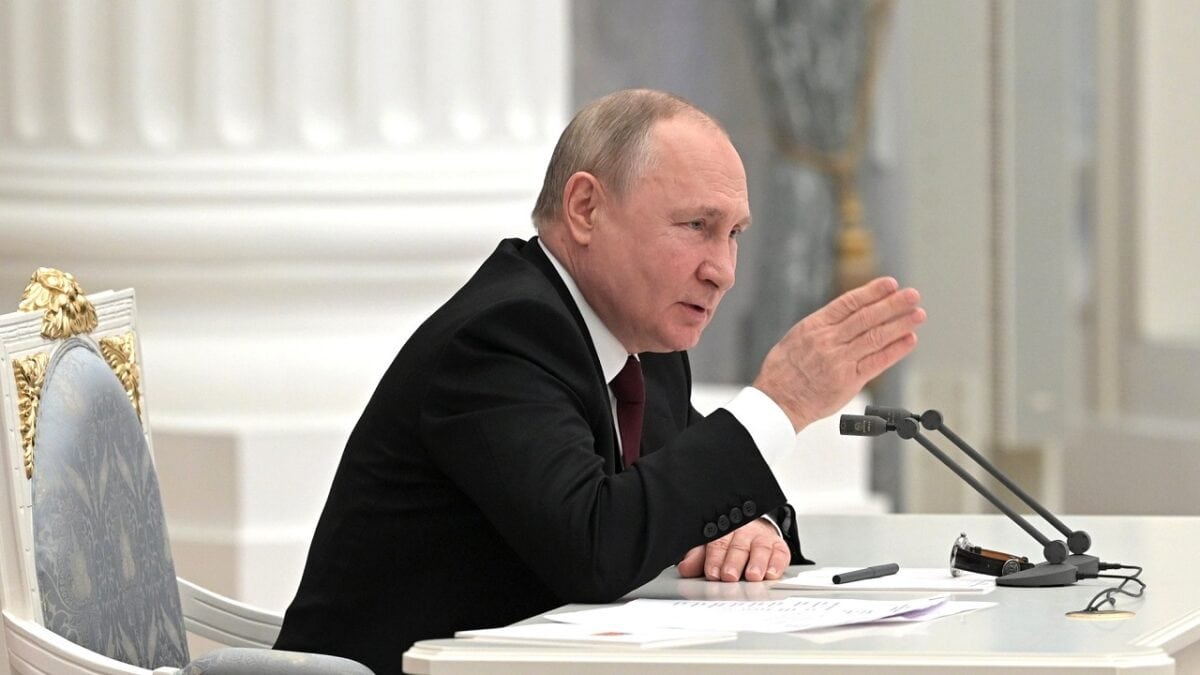
Russian President Putin.
—While approximately half of the 120 BTGs that were committed consisted of elite troops or at least fully manned with contract (professional) personnel, the other half had a mixture of conscripts or young, short term contractors who were neither trained nor psychologically prepared for the aggressive tasks expected of them. Many were told they were on a peacetime training exercise and were surprised when they entered Ukraine and found that the population that they were supposed to liberate see them as aggressors.
On the other hand, on several large invasion axes where the force consisted of an integrated divisional sized command, Russian success was more significant. As illustrated in the attached map: the armored thrust passed Chernigov towards Kyiv; the successful penetration at Konotop by the 1st Guards Tank Army’s 4th Guards Tank Division; and the breakthrough from Crimea with dual deep thrusts seizing Kherson and threatening Mykolaiv to the west and overrunning Melitopol and heading to surround Mariupol.
Overall, the slowed momentum of the invasion and disjointed penetrations to date must demonstrate to Putin that this is not going to be an easy or fast campaign. On the other hand, with key urban areas on the point of being surrounded such as Mariupol, Kharkiv, and Chernigov there remains the serious potential of eastern Ukraine eventually being overrun as far as the Dnipro river line.
If the southern drive continues to the west, Odessa likewise, is threatened and the Russians may achieve a link up with Transnistria.
To the northwest, there is a large offensive force assembled in Belarus that has yet to be committed. This includes BTGs from the Far Eastern 5th, 29th, 35th Armies as well as Belarussian elite air assault and special forces. They pose a serious threat of eventually cutting off Ukraine from the West.
How far do you think [Putin] will go to achieve his objectives?
If one looks at where the Russian main effort is directed, Putin’s strategic objectives appear to be three-fold: Seizing the capital Kyiv and forcing a regime change — which has clearly stalled and may be at the point of failing;
—Seizing Eastern Ukraine up to the Dnipro river line —a slowly developing offensive but one which could accelerate if key cities are surrounded and defensive positions become in danger of envelopment along the Donbas front; and,
—Occupying and controlling southern Ukraine, including the entire coastline — an area between Rostov and Transnistria and as far north as Kryvyi Rih and Dnipropetrovsk — which is the most successful effort so far.
Bottom line, for Ukraine the situation remains extremely grave. For the Russians, they face the prospect of a campaign continuing for weeks (as opposed to days) to achieve those objectives with much higher losses.
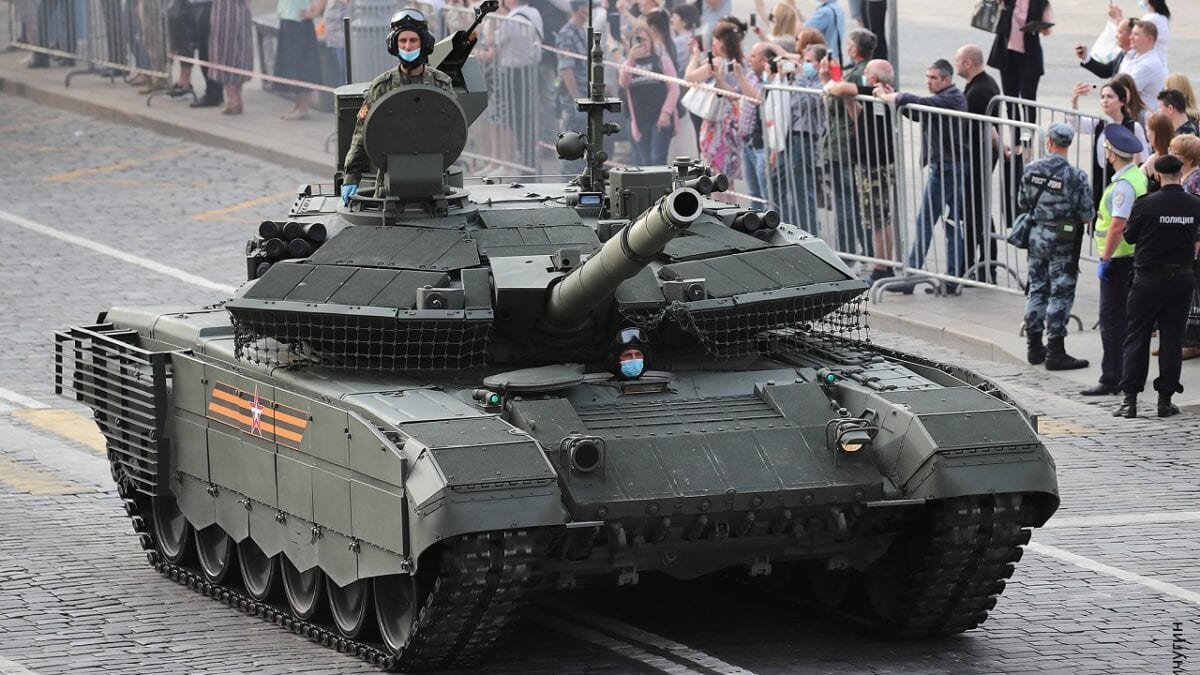
Russian Military T-90 Tank. Image Credit: Creative Commons.
In Syria, for example, [Russia] bombed schools and hospitals and waged war on civilians. Putin seems to be doing more of this now. How far will he go knowing the world is watching his every move?
Putin seems oblivious to world opinion or even the long-term effects on Russia.
It is interesting that, originally, he described this campaign as a “Special Military Operation” focused on demilitarizing Ukraine. Several days ago, in his new directive to Minister of Defense Shoigu it was changed to “Military Offensive.” The subtle nuance being the gloves are coming off and this is now a campaign treating all Ukrainians (not just the military) as enemies. The US intelligence community has warned that this means the use of massive firepower to destroy major urban centers of resistance irrespective of civilian casualties. I agree with that assessment.
Some are calling for a no-fly zone over Ukraine?
The Ukrainians are begging for western help to get Russian air off of their back, however, there are both military and political impediments to doing that.
Where they need that the most are over Kyiv, in the east and south of the country, which is a very long reach for the limited number of U.S. and NATO aircraft available particularly in trying to police around the clock a no-fly zone. Politically, President Biden has declared that U.S. forces are not to engage the Russians, and his “no boots on the ground” prohibition presumably includes “seats in cockpits” over Ukraine without the U.S., any air action by NATO is militarily infeasible.
Is a no-fly zone really possible?
Despite what I already said I believe we have yet to face the real decision point. Several years ago, I participated in a NATO analysis that included a Russian invasion of eastern and southern Ukraine which estimated up to 10 million refugees fleeing to the west. At the time the sheer scale of that seemed unimaginable however in the last three days alone, the rate of refugee flight is actually faster and larger than those previous estimates.
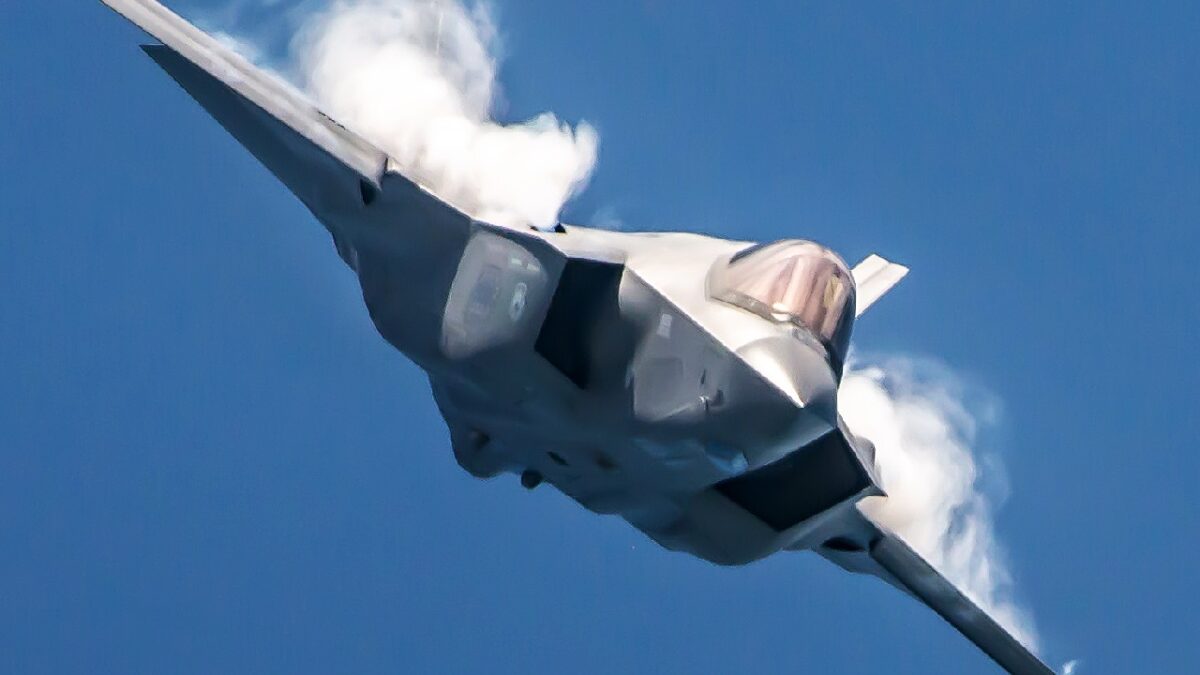
Capt. Andrew “Dojo” Olson, F-35A Lightning II Demonstration Team pilot, performs over Miami Beach, Fla., May 25, 2019. Olson performed the demo during both days of the Miami Beach Air and Sea Show. (U.S. Air Force photo by Staff Sgt. Jensen Stidham)
Realistically we are facing the prospect of 10 million refugees with 75 percent of them concentrated in border areas on Ukrainian territory, waiting for processing and in dire need of food, shelter, medical supplies, and security. We can’t blame the NATO countries for insisting on orderly and methodical processing for what could be a deluge of displaced persons running amuck. But we need to come to the realization that the world may be witnessing millions of people suffering, even dying women and children. Already it has been pointed out that it is similar to watching another Holocaust and doing nothing.
Given that Russian forces are not in western Ukraine or near the border areas at this time, it would be prudent to insert large-scale humanitarian assistance into those areas protected by multinational peacekeeping forces and protected by an allied “aerial secure” zone above. If we don’t recognize that need and respond in time our Commander in Chief and the reputation of the American people will be branded in history for cowardliness.
Lastly, if the Russian economy were to collapse and Putin’s back is against the wall would he dare strike NATO?
I believe that both we and Putin have misunderstood the role and power of economic sanctions. On our side, we assumed they would have a deterrent effect and clearly, that was a mistaken assumption. Putin appeared to believe, based on past history, that the sanctions would be small and affect the Russian economy marginally. It may take months. but the combined impact of the announced sanctions threatens to put Russia’s economic condition back a quarter-century to where it was in the mid-1990s.
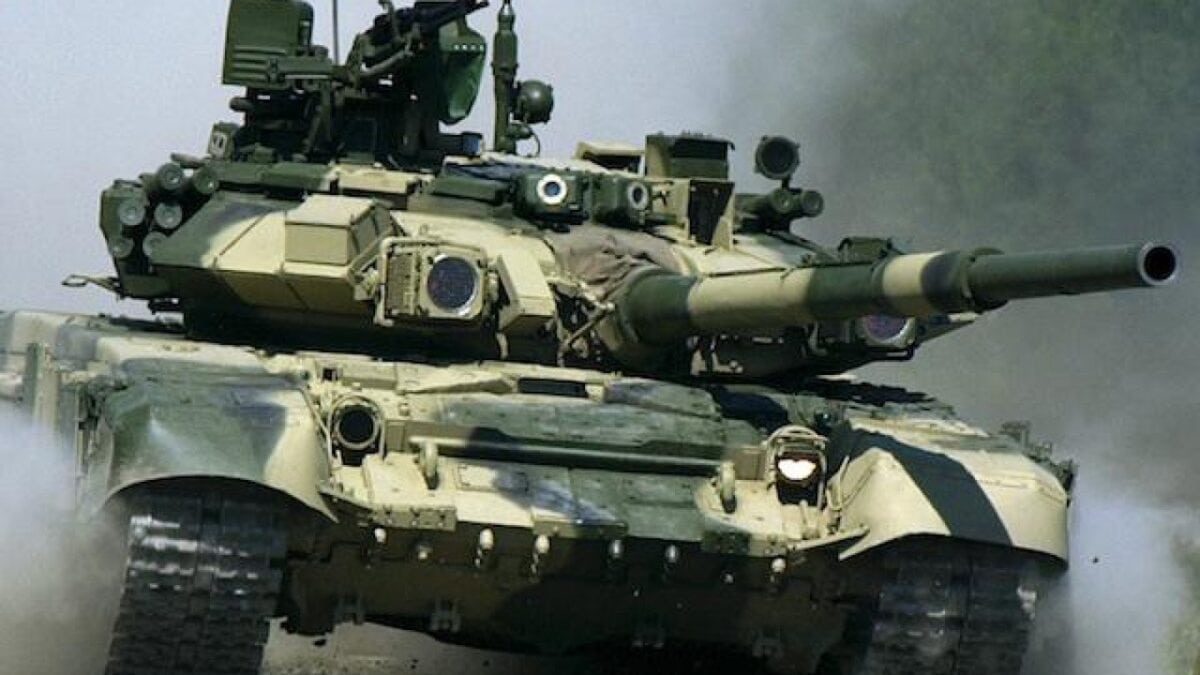
Russian T-90 Tank. Image Credit: Creative Commons.
If Putin fails in Ukraine, he will not be in a position to seriously threaten NATO with conventional invasion. If he succeeds with defeating Ukraine’s military and occupying the country with draconian police state suppression, within a year or two NATO may see Russian Tank Armies forward-deployed not only in Belarus but in Ukraine aimed like a dagger toward Poland and the Baltics.
Would Putin in any situation try to negotiate his way of this?
It seems that Putin has three fundamental options (with a host of variance in between):
— Option 1, stay on the current path with a methodical, extended war against Ukraine.
— Option 2, escalate with the use of a low-yield battlefield tactical nuclear weapons and chemical attacks on urban resistance.
— Option 3, at some point offer a seize fire with the following conditions; regime change in Ukraine to include a friendly coalition government, demilitarization of Ukraine or at least two thirds of it and cessation of sanctions in return for returning his forces to Russian territory.
Only “the Devil” knows which option he will pick.
Dr. Phillip A. Karber is President of the Potomac Foundation. Dr. Karber is an internationally recognized authority on defense and national security matters; an accomplished business executive; and a university professor. He has prepared studies and recommendations on defense strategy for the highest levels of the U.S. government; advised many NATO governments on defense issues; headed BDM Corporation’s International Division; served as JFK International Air Terminal’s Chairman of the Board; and teaches courses in national security and military affairs at Georgetown University.

